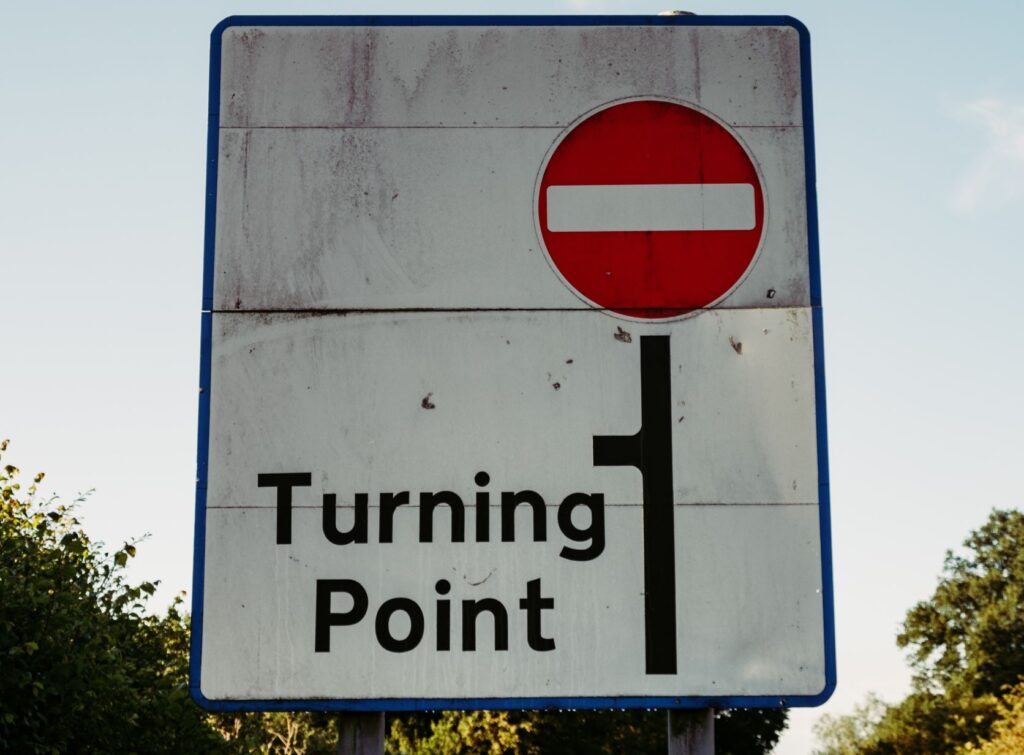Today, we’re talking about the Midpoint, also known as the Second Plot Point, the Moment of Truth, or the Mirror Moment. It’s a vital turning point for your MC, but it can also be a pitfall for unprepared writers.

First, let’s take a look at what happens in between the First Pinch Point and the Midpoint. During this time, your character is going to be even more confused. On top of his relationships with other characters, his exploration of the Adventure World, and his resistance to the Truth, he now has to juggle the main conflict. But, stubbornly as ever, he’s going to trudge on, keeping a firm grip on his Lie.
In “Beyond the Mask,” Charles Kemp’s plans are brought further into the light in a scene at the mysterious windmill island. He stirs up Loyalist men to “Go… and create havoc” on Philadelphia. This will provide the needed cover for a more sinister plan—one that hasn’t yet been revealed.
As usual, there is no scene in between the two plot points in “In Time of Need,” since it’s a short story.
It’s here, at the halfway point of the story, that the Midpoint arrives. This plot point is so important that some authors refer to it as the “centerpiece” of the story. However, it’s also one of the most misused plot points in stories today. Without a proper view of it, your story can end up with a great beginning and ending, but a middle that will make readers want to throw the book out of the window.
It’s actually understandable why this is common for writers… they know the beginning, and they know the ending, but the middle is often the trickiest. So let’s talk about a few different elements that can help avoid the saggy middles and plot holes that often accompany the Midpoint:
- The Truth
As I said before, this plot point can also be referred to as the Moment of Truth. This is when the character clearly sees the Truth, though they don’t yet reject the Lie. This can take place through various means, but, ultimately, the Truth is going to shine out.
Often, the Moment of Truth will be displayed by the triumph of a supporting character. In these cases, the supporting character may help the MC in some way, showing them how the Truth can be used. Along with that, it will be hinted either that the Truth can be used to obtain the Want, or that the Want is not what the MC needs.
The Moment of Truth can also come through a failure on the MC’s part due to their Lie. Up until this point, they’ve held to the belief that their Lie can fix everything. But when the Lie fails them, they begin to wonder if it will fail them in other things.
While more uncommon, the Moment of Truth could even come due to an antagonistic force. In a novel I wrote a few years ago, one of the MCs got his Moment of Truth from someone very unexpected. His crazy, very much antagonistic uncle unknowingly reveals the Truth to him in one, brief sentence. And hearing the Truth from such an unexpected source made it all the more impactful.
It’s important to note that, however you choose to display the Truth during the Midpoint, the MC still won’t accept it. They don’t vehemently reject it as they once did, but aren’t exactly ready to give up their Lie.
The Midpoint is also called the Mirror Moment because the MC is often faced with themselves in the light of the Truth. It’s where they take a look at their lives and ask themselves who they really are. Often, the Midpoint will involve a real mirror, a lake, or some other kind of reflection, but those aren’t necessary.
In “Beyond the Mask,” Will pins the newspaper announcing his supposed death to the wall of his small apartment. He stands looking at it for a moment, the past yet again rising before his face. This is a clear moment when he is facing the crimes he has committed. However, he still shoves the Truth away, and moves ahead with his plans for redemption.
(Note: The Midpoint in this movie is a bit irregular. First of all, the above scene is located earlier in the movie than where the Midpoint really should be. Second, the Midpoint isn’t made up of just one scene… instead, there are several scenes, each of which provide one of these elements to make up a Midpoint.)
In “In Time of Need,” Tad runs into Reverend Sheppard a second time. The reverend witnesses to Tad again, not knowing just how much trouble the boy is in. But even though Tad is quite helpless at this point, he isn’t ready to receive the Truth. He has a plan, and he fools himself into thinking it will work.
- The plot
As I said before, the event that makes up your Midpoint could be either good or bad for the MC. It might involve the antagonist, or it could be entirely the MC’s fault. But any way you choose to write it, this event is going to be big. Remember, this is the centerpiece of your story, so make it count.
Often, the Midpoint will involve some kind of battle, chase scene, or other action. In slower-moving stories, the Midpoint might take the form of an argument or a car accident. There really is a lot of room for creativity. But, above all, make sure that this even will have a huge impact on the character—both physically and mentally.
In “Beyond the Mask,” Will becomes the Highwayman, foiling Charles Kemp’s plans by night, and working in Benjamin Franklin’s print shop by day. Much of this Midpoint is Will’s doing, but it marks a definite turning point in the plot.
In “In Time of Need,” Tad’s refusal to accept help from Reverend Sheppard also has external consequences. After all, when he brushed aside Reverend Sheppard earlier that morning, he wasn’t in as much danger. But now, the threat is more real than ever. In this way, Tad’s decision to refuse help has bigger implications than it did before. It represents his determination—as helpless as his situation is—to protect Ava himself.
- The revelation
Often (though not always), the Midpoint will involve some kind of revelation. Along with the MC’s internal revelation that the Truth just might be the answer, a plot revelation can turn their external world upside down.
This revelation typically has to do with the main antagonist—whether it’s his identity, his plans, or something he did in the past. Other times, it will reveal the identity of a minor antagonist. Still other times, the revelation may have to do with the backstory of either the MC or one of the supporting characters.
Whatever the revelation is, it might be a shocker for the MC. It will change the way they see the main conflict and, ultimately, change the way they behave toward the antagonist. The revelation at the Midpoint may even change their specific goal, just as the First Plot Point did.
In “Beyond the Mask,” there isn’t much of an external revelation. However, we see that Will’s internal revelation throughout the first half of the 2nd Act sparks a new specific goal. Will is still intent on redeeming his name but, to do that, he now knows that he must first stop Charles’ plans.
In “In Time of Need,” Tad is still very much in the dark about Mr. Beasley’s true plans. But the external revelation at the First Pinch Point (that Mr. Beasley has Ava hostage), sparks Tad’s new specific goal at the Midpoint—to run from Mr. Beasley’s office and rescue Ava.
- From reaction to action
Previously, your MC has very much been in a state of reaction. While there have been moments of conscious choice-making, they were mostly forced into making a decision because of things out of their control. Rejecting the Inciting Event, forced to cope with the Adventure World after the First Plot Point, and attacked by the antagonist at the First Pinch Point.
But the revelation at the Midpoint is going to change all that. Now, for the first time in the story, your MC is going to really be able to fight back against the antagonist. While, before, it may have seemed that they were fighting the villain, the revelation showed that they were going about it the wrong way.
With the information given to them at the Midpoint, your MC will dive forward into action. No longer ducking from the antagonist’s blows, they are able to start throwing their own punches. This is going to give them a level of confidence during the second half of the 2nd Act—which will lead them to believe that they just might win this after all (more about that next time).
In “Beyond the Mask,” Will begins to finally fight back against Charles as the Highwayman. Through information gained earlier in the film, he is able to foil Kemp’s plans for creating havoc. After every succeeded mission, Will pins the newspaper reports up on his wall next to the newspaper about his “death.” In a continuation of the Mirror Moment, he’s creating his own wall of good deeds to outweigh the bad things he’s done. He even saves Charlotte herself, as we’ll see next time.
In “In Time of Need,” Tad goes from reaction to action as he finally takes charge and bolts from Mr. Beasley’s office. For once, he’s not scheming about doing something—he’s actually doing it. And his refusal to accept help from Reverend Sheppard only seals his confidence in his ability to handle the situation himself.
Here are a few more Midpoints to consider:
- Judah saves the life of his commander; he is set free (“Ben-Hur”)
- Carl learns about Russell’s dad; they are captured by Charles Muntz (“Up”)
- Mr. Potter offers George a job; George refuses (“It’s a Wonderful Life”)
- Sadness comforts Bing-Bong; they board the Train of Thought (“Inside Out”)
Make sure to put a lot of effort into your Midpoint, and keep these tips in mind to avoid plot holes in your story. Next time, we’ll talk about the Second Pinch Point, the last plot point before we dive into the 3rd Act.
Comment below the Midpoint of your favorite book or movie!


2 responses to “The Positive Change Arc Midpoint”
Do you think the irregularly of the midpoint in Beyond the Mask negatively affects the movie’s quality? Or do you think it is a positive because of its uniqueness or some other reason?
I think plot points can definitely be spread out into separate scenes, but the writer has to make sure that it still has the same effect on the story.